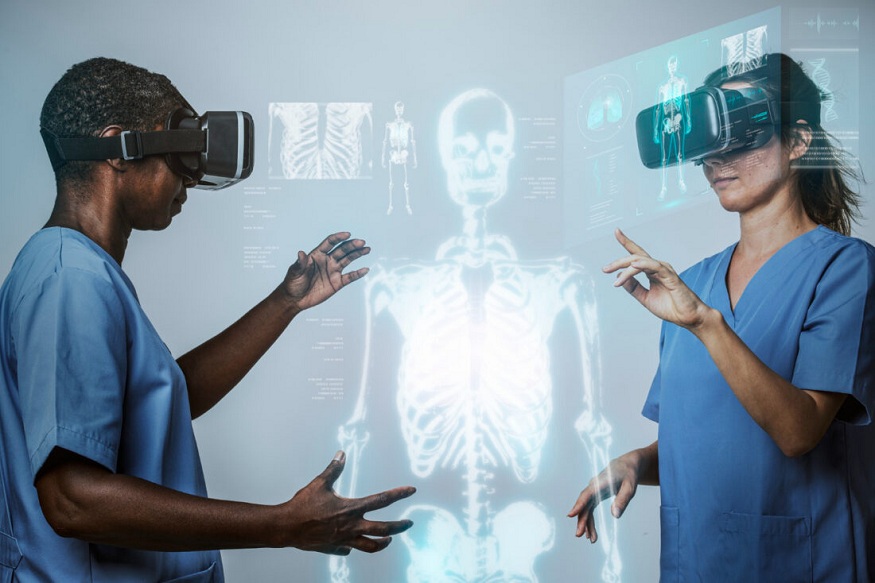Reducing Cement Leakage with Advanced Navigation Systems

Cement leakage has long been one of the most concerning complications during vertebral procedures, such as vertebroplasty and kyphoplasty. While these minimally invasive techniques are highly effective at stabilizing spinal fractures and relieving pain, they rely on the precise delivery of bone cement into fragile vertebrae. When cement leaks outside the intended area, it can lead to complications like nerve compression, embolism, or damage to nearby tissues. Dr. Larry Davidson, an expert in spinal surgery, highlights that advanced navigation systems are helping reduce these risks by guiding surgeons with greater accuracy during each step of the procedure.
In recent years, imaging and navigation tools have been developed to provide real-time feedback in the operating room, offering surgeons a clearer, more detailed view of spine anatomy. These improvements are making procedures safer and more predictable, especially in patients with challenging fracture patterns or compromised bone quality. For individuals undergoing vertebroplasty or kyphoplasty, this means a lower chance of complications and more confidence in the outcome.
The Problem with Cement Leakage
Bone cement plays a vital role in stabilizing fractured vertebrae by hardening inside the bone and restoring structural integrity. When injected into a weakened or porous bone structure, the cement can migrate through cracks or gaps, entering surrounding tissues or the spinal canal. This leakage may not always cause symptoms, but in some cases, it leads to serious issues such as pain, numbness, or, in rare situations, pulmonary embolism.
Historically, the rate of cement leakage varied depending on the technique used, the type of cement, and the severity of the fracture. High-pressure injection methods and low-viscosity cement increased the likelihood of unintended spread. As a result, careful control and precise targeting became essential parts of surgical planning. That’s where advanced navigation systems began to make a significant impact.
How Navigation Systems Work
Navigation systems used in spinal procedures combine real-time imaging with computer-assisted guidance to help surgeons track the position of surgical tools and bone cement throughout the operation. These systems often utilize fluoroscopy, CT scans, or 3D mapping to visualize the spine structure in fine detail. Once the system creates a digital model, the surgeon can plan a path for the needle, monitor cement flow, and make adjustments based on live data.
Unlike traditional fluoroscopy, which provides two-dimensional images, modern navigation platforms allow for a three-dimensional perspective. It added depth,enabling surgeons to identify potential risks before they become problems. For example, if a fracture line runs close to a nerve or blood vessel, the system can alert the surgeon to avoid injecting cement in that direction.
In addition to planning the procedure, navigation systems provide continuous feedback. Surgeons can see exactly where the needle is at all times, ensuring that it enters the vertebra at the correct angle and depth. This precision reduces the likelihood of breaching the bone wall and leaking cement into unintended areas.
Improvements in Cement Control
The combination of high-viscosity cement and navigation-guided delivery systems has made a measurable difference in preventing leakage. Thicker cement flows more predictably and slowly, which is easier to monitor using real-time imaging. Surgeons can pause or redirect cement flow the moment it begins to drift outside the desired cavity.
New injection tools also play a role. Modern cement injectors are designed to offer fine control over volume and pressure, giving surgeons the ability to make quick adjustments. These tools are compatible with navigation systems and allow the surgeon to respond to visual cues from the imaging screen without delay.
Together, these advancements are leading to a more consistent experience. Many surgeons now report significantly lower rates of leakage, particularly in complex cases that would have previously been considered high-risk.
Training and Clinical Adoption
Like any technological advancement, the success of navigation systems depends on proper training and integration into clinical practice. Many spine specialists undergo additional instruction to learn how to interpret data from these systems and incorporate it into their surgical workflows.
Dr. Larry Davidson says, “As physicians, we are here to treat people, not just conditions. The technology is only as effective as the thoughtfulness we bring to its use.” It reinforces the idea that surgical tools, no matter how advanced, must be guided by a human-centered approach to truly improve outcomes.
Patient Benefits and Postoperative Confidence
For patients, the most obvious benefit of navigation systems is the reduced risk of cement leakage. But there are additional advantages as well. When cement is accurately placed, the vertebra is more stable, and the chances of needing revision surgery are lower. Patients often report faster recovery, less post-procedure discomfort, and greater confidence in their treatment.
Because procedures guided by navigation systems are less prone to complications, patients may also spend less time in the hospital and require fewer follow-up visits. These improvements contribute to better overall satisfaction and long-term outcomes.The systems are particularly valuable in patients with osteoporosis, where bone integrity is compromised. In these cases, traditional techniques can be unpredictable, making the ability to visualize cement flow in real time especially critical.
Smarter Tools, Safer Procedures
As navigation platforms continue to improve, the precision and safety of spinal procedures are likely to follow suit. The latest systems are integrating artificial intelligence and predictive modeling, which may one day allow for even more proactive decision-making in the operating room. Some developers are working on robotics-assisted injection systems that further reduce the margin for error and enhance consistency.
Hospitals are also exploring ways to make these technologies more accessible, with compact platforms that can be deployed in outpatient centers and smaller facilities. This wider availability ensures that more patients can benefit from navigation-guided care, regardless of where they receive treatment.
At the same time, ongoing research is focused on better understanding the long-term benefits of navigation systems. Clinical trials and case studies help define best practices and refine surgical protocols for maximum safety and effectiveness.
Enhancing Safety Through Precision
Reducing cement leakage is more than just minimizing risk. It’s about providing a higher standard of care. Navigation systems give surgeons better control, improving outcomes and helping patients recover with fewer complications.
For individuals facing spinal procedures like vertebroplasty or kyphoplasty, advanced imaging and navigation offer reassurance that every effort is being made to deliver safe and effective treatment. With the support of this technology and the skill of trained specialists, patients can move forward with greater confidence and less uncertainty.









